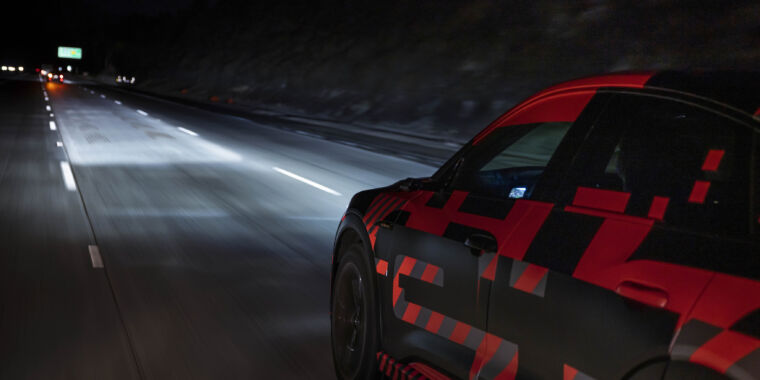The US will finally allow adaptive beam headlights on new cars - 3 minutes read

The National Highway Traffic Safety Administration is finally poised to legalize adaptive beam headlights in the US. On Tuesday, the NHTSA announced that it has issued a final rule that will update the Federal Motor Vehicle Safety Standards, which currently only allow for "dumb" high- and low-beam lights.
Adaptive beam lights use a matrix of projectors, some of which can be turned off to shape the beam so the lights illuminate the road but don't shine at an oncoming driver. (These are an advancement over the auto-high beam technology that you may have fitted to your current car.) The technology has been around for nearly two decades in Europe and Japan.
Automakers have been asking the NHTSA to update its headlamp rules for some time now. In 2013, Toyota first petitioned the agency to allow for adaptive beam lights, and the NHTSA agreed to begin the laborious and lengthy federal government rulemaking procedure.
In 2016, Volkswagen Group applied for an exemption from the current headlight rules to import some adaptive lamp-equipped vehicles, and in 2017 BMW did the same. (The NHTSA did not make a decision on either of those petitions until the publication of this final rule, which simultaneously denies both VW Group's and BMW's requests, as an exemption is no longer required because the technology is now legal.)
Finally, the NHTSA published the Notice of Proposed Rulemaking in 2018 after the National Transportation Safety Board conducted an investigation finding that the government should not be actively restricting headlamp systems that have been shown to have a safety benefit. Now, at last, that process has been completed.
The NHTSA could simply have adopted Europe's standards, which were enacted in 2006, for these adaptive beam lights. But new vehicles in Europe are type-approved, unlike in the US, where OEMs self-certify that their new products meet the required regulations. The NHTSA says the road test portion of Europe's type approval process for adaptive beam lamps is too subjective for a self-certification regime.
Instead, the NHTSA used the SAE International's recommended practice, published in 2016, as the basis for the new regulations. There are some differences in track-test scenarios—for example, to ensure that drivers on curved roads aren't subjected to glare.
"NHTSA prioritizes the safety of everyone on our nation's roads, whether they are inside or outside a vehicle. New technologies can help advance that mission," said Dr. Steven Cliff, the NHTSA’s deputy administrator. "NHTSA is issuing this final rule to help improve safety and protect vulnerable road users."
Source: Ars Technica
Powered by NewsAPI.org